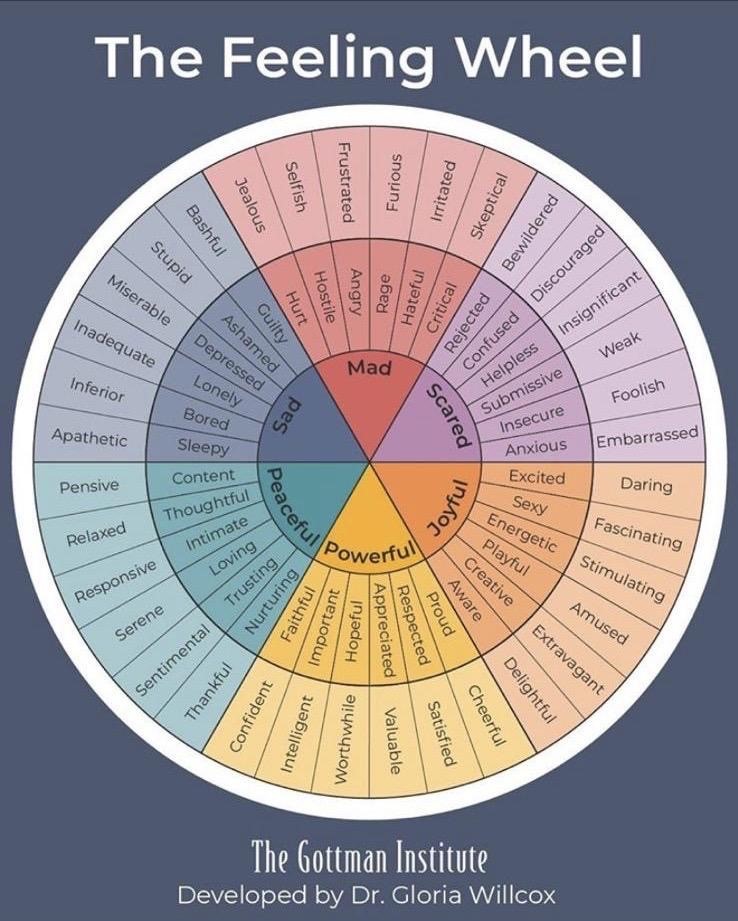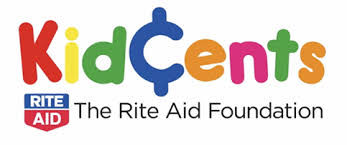The Feeling Wheel
06/03/20
Community Trauma: Navigating a Pandemic
Article #9: The Feeling Wheel
J. Thomas Munley, LPC, CTP-C
Trauma Coordinator, ACE’s Master Trainer
Mid-Michigan Trauma Collaborative
Do you know how many emotions a human being can experience? It is somewhere around 34,000. Who would know when we use about 3 of them to describe how we are feeling. Growing our emotional intelligence is a way to both deepen our personal understanding of our inner life and more accurately help us deal with the true emotion we may be experiencing.
The Feeling Wheel was developed by Dr. Gloria Wilcox from the Gottman Institute. The wheel is a wonderful way to either help clients or use for ourselves to begin to identify feelings and dig deeper to understand what might actually be behind or underneath some of the ways we may be experiencing a particular day, hour, or moment.

The inner wheel is created with six basic emotions; mad, scared, joyful, powerful, peaceful and sad. From these six, we can move further out to explore other emotions that may be underlying the more general feelings we may be experiencing. We can then move one more rung out to another six precise emotions. We can also cross over to the other side of the emotion wheel to see what emotion may help us move away from the one we are feeling. You can go to ‘The Gottman Institute’ webpage and print the wheel yourself or there is also an app that you can download for the wheel on your phone.
Teaching children to more accurately name their emotions can also assist parents, teachers, therapists and others to have a better sense of what the child needs or is experiencing. Working toward social-emotional health and understanding for youth will create a society of healthier adults. There has been lots of research around social-emotional learning for kids. When children are able to understand, appreciate and control their emotions, other class room learning becomes more focused because students and their teachers are spending less time managing classroom behavior and more time on actually learning.
Mayra Porrata and Kristie Pretti-Frontczak have created an Essence Glossary on their web-site “Mindful Education Solutions” that list 32 social-emotional attributes that assist in developing a child’s emotional health and wellbeing. Below, you will find a selection of attributes, suggestions on how to prompt a conversation about them at home, and activities you can do with your child to teach her these skills. I really like how Porrata and Pretti-Frontczak have laid these out with simple and clear language for teaching. You can see more at their web-site listed above.
1. Adaptability
How we define it: Openness to changing conditions
How to start a conversation about it: “What is something unexpected that happened to you last year? How could you have dealt with it better?”
What you can do to promote it: Next time your child is witnessing you confront a change (big or small, expected or unexpected), point out what you are doing to cope. For example, if she is with you in the car when you get lost, talk her through how you are going to find a new route, and show her how the extra time in the car can be used for something fun — like a favorite song.
2. Attention
How we define it: Selective and purposeful direction of the mind
How to start a conversation about it: “Did you notice the sunset today?”
What you can do to promote it: Because so much of our days are spent on autopilot, it is important to stop and notice the little things — like nature, sounds, or our own thoughts and emotions. You can get your child to exercise her ability to pay attention by having her describe how she is using her five senses to perceive her surroundings.
3. Bravery
How we define it: Ability to overcome fear and uncertainty by taking action
How to start a conversation about it: “When you are doing something you feel is scary, what kinds of thoughts help you get through that moment?”
What you can do to promote it: Point out moments of bravery that happen around you, whether they happen on a TV show or in your neighborhood. You can also share a memory with your child about the last time you had to confront a fear.
4. Civility
How we define it: Use of respectful words and actions towards others
How to start a conversation about it: “Please don’t be afraid to tell me if I’m ever rude to you.”
What you can do to promote it: The words we use and our tone matter. Focus on the way that you communicate your disagreement in front of others and your child is sure to learn from your example.
5. Empathy
How we define it: Ability to intuit and sense what others may be feeling
How to start a conversation about it: “How can you tell if someone is sad?”
What you can do to promote it: Be intentional about sharing your own feelings and emotions at home so that your child can see that even grown-ups feel different things all the time. You can encourage your child to intuit how others may be feeling with thought exercises. For example, pick a character from a recent book and ask your child to imagine how that character may have felt in a given scene.
6. Forgiveness
How we define it: Acknowledgment of wrongdoing without seeking revenge or punishment
How to start a conversation about it: “How do you feel when someone says they are sorry for hurting you? How do you feel when you say you are sorry to others?”
What you can do to promote it: Share a story about a time you forgave someone who hurt you and what you learned from the experience. Then, ask your child to think about a time she forgave someone even though she was hurt by that person’s actions.
7. Gratitude
How we define it: Expression of thanks for things given or benefited from
How to start a conversation about it: “What are you grateful for today?”
What you can do to promote it: Post a simple gratitude list on your refrigerator door or dry erase board in a common area of your home. Encourage every member of your family to add an item once a day.
8. Honesty
How we define it: Expression of one’s own truth
How to start a conversation about it: “When was the last time it was difficult for you to tell the truth about something? What about that situation was difficult?”
What you can do to promote it: Practice sharing honest observations about yourself (e.g., “I notice that when I do X, Y happens").
9. Humor
How we define it: Playful and lighthearted approach to life
How to start a conversation about it: “How do you feel when you make other people laugh?”
What you can do to promote it: Share jokes with one another or watch funny shows or movies together. It’s also helpful to show your child that you can laugh at yourself; so next time you do something inadvertently silly, teach her that having a giggle at yourself can make embarrassing moments easier.
10. Patience
How we define it: Calm and steady approach despite discomfort
How to start a conversation about it: “I keep my cool when something is upsetting by doing X. What do you do?”
What you can do to promote it: Encourage “family silent time” for five minutes a few times a week — for best results, practice daily. This will teach your child to be able to appreciate stillness and develop her patience.
11. Resilience
How we define it: Capacity to recover from adversity
How to start a conversation about it: “When is the last time you had to try something a few times before you got the hang of doing it?”
How to start a conversation about it: Make a list of five difficult things you’ve overcome, then share this list with your child. Have your child do the same.
Creating nurturing environments for our children to learn and deepen their human intelligence skills will make us all a better society and more caring community.
Remember, humans are resilient!

















.png)
















































